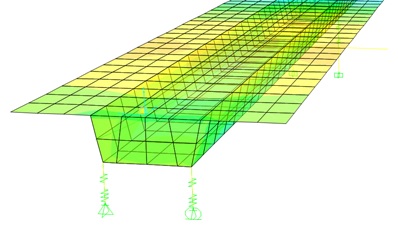 Nos acaban de publicar en línea en la revista Structural and Multidisciplinary Optimization (revista indexada en JCR en el primer cuartil) un trabajo de investigación en el que utilizamos las redes neuronales artificiales junto para el diseño multiobjetivo de puentes postesados de carreteras. Os paso a continuación el resumen y el enlace al artículo por si os resulta de interés. El enlace del artículo es el siguiente: http://link.springer.com/article/10.1007%2Fs00158-017-1653-0
Nos acaban de publicar en línea en la revista Structural and Multidisciplinary Optimization (revista indexada en JCR en el primer cuartil) un trabajo de investigación en el que utilizamos las redes neuronales artificiales junto para el diseño multiobjetivo de puentes postesados de carreteras. Os paso a continuación el resumen y el enlace al artículo por si os resulta de interés. El enlace del artículo es el siguiente: http://link.springer.com/article/10.1007%2Fs00158-017-1653-0
Referencia:
García-Segura, T.; Yepes, V.; Frangopol, D.M. (2017). Multi-objective design of post-tensioned concrete road bridges using artificial neural networks. Structural and Multidisciplinary Optimization, doi:10.1007/s00158-017-1653-0
Abstract:
In order to minimize the total expected cost, bridges have to be designed for safety and durability. This paper considers the cost, the safety, and the corrosion initiation time to design post-tensioned concrete box-girder road bridges. The deck is modeled by finite elements based on problem variables such as the cross-section geometry, the concrete grade, and the reinforcing and post-tensioning steel. An integrated multi-objective harmony search with artificial neural networks (ANNs) is proposed to reduce the high computing time required for the finite-element analysis and the increment in conflicting objectives. ANNs are trained through the results of previous bridge performance evaluations. Then, ANNs are used to evaluate the constraints and provide a direction towards the Pareto front. Finally, exact methods actualize and improve the Pareto set. The results show that the harmony search parameters should be progressively changed in a diversification-intensification strategy. This methodology provides trade-off solutions that are the cheapest ones for the safety and durability levels considered. Therefore, it is possible to choose an alternative that can be easily adjusted to each need.
Keywords:
Multi-objective harmony search; Artificial neural networks; Post-tensioned concrete bridges; Durability; Safety.
Os dejo a continuación la versión autor del artículo.

